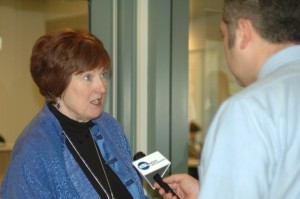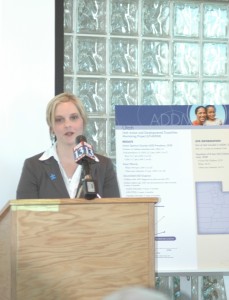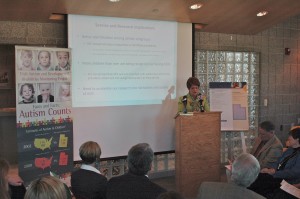
The CDC has announced that the rate of autism spectrum disorders among 8 year olds reached 1 in 88 in 2008, according to a new study released today. In a tandem press conference, University of Utah’s Judith Pinborough-Zimmerman, Ph.D. announced that the Utah Autism and Developmental Disabilities Monitoring Project (UT-ADDM) has found that one in 47 Utah children, one in 32 boys, falls under autism classification. This means that, from 2002-2008, autism prevalence increased 78% nationally and 157% in Utah.
As the shock dissipates the fury will rise. Over the next 24-48 hours we will hear every opinion under the sun about what is true, or false about autism. We will listen to vested interests discuss whether this is a public health emergency or merely an “urgent public health concern”. We will hear conflicting demands to prioritize funding for either genetic or environmental research, and we will hear that even though we have been seeking to understand autism for decades now, it is still a puzzle. Pundits will use the word “mystery” ad nauseum and we will be told the number of children on the spectrum is inflated by over or misdiagnosis. Ultimately, the general public, including well meaning but undereducated professionals, will be reassured through well-crafted statements by earnest talking heads.

The parents of children affected by ASD will not be so easy to pacify. If the increase were just in the group of quirky borderline kids (the sensory sensitive, with a little social emotional delay) all that might be needed is some early intervention, a few 504 accommodations and a world with more engineering and tech jobs available upon graduation. No doubt, the world would be a better place with a greater acceptance of neurodiversity but the reality is that the more debilitating characteristics of autism, be it medical, developmental, relational or behavioral, obstruct the path to fulfillment of potential at best, and at worst, imprisons a person in a body unable to speak, gesture, and communicate.

The time for awareness raising is over. Autism is present in nearly every neighborhood, classroom, and place of employment. We are aware. What we need now is an extraordinary commitment to funding research on ALL the possible contributors to the autism epidemic. We need appropriate and affordable medical care, with pediatricians that have real training to handle our children’s GI problems, PANS and other complex medical concerns. Autism is treatable and medical insurance companies should not be allowed to deny appropriate coverage for intervention and treatment. We need states to fund new training requirements so that inclusion no longer means that our children are ignored, treated like a burden or “class pets” by teachers and administrators in public schools. We need affordable access to intervention and treatment. And don’t forget, a large cohort of children with ASD now transitioning to adulthood begs the question, what will this group do when their parents are no longer able to care for their needs? We need options for young adults aging out of the public school system with little chance of gainful employment or appropriate housing. We must impress upon legislators the importance of finding funds to support desperately needed services.
The time for merely raising awareness is over. The vitriolic bickering that diminishes our power and credibility to advocate for our children as a unified group must end. We must look at one another and decide, unequivocally, that our present generation’s needs will not wait for the future and that it won’t wait while we quibble over the myriad of controversies associated with autism. We need every inclined mind, every dollar available, every heart activated to invest in the present and future of autism in the United States. There is strength in unity. The time is now.